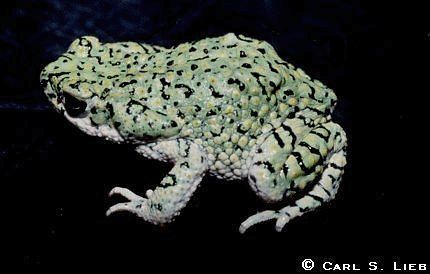

Green in an animal usually isn't considered a good thing—green around the gills (sick, that is), green with envy (a character fault, in most peoples' eyes), or even just plain green (as in tenderfoot). Yet there are a few creatures that look good in green, if you don't mind ignoring a few warts.
Green Toads, averaging less than an inch and a half in length, are widespread in the Chihuahuan Desert, even in creosotebush areas inhospitable to so many animals. Like many desert amphibians, breeding depends on temporary pools formed after the start of the summer rains. In typical toad manner, males form breeding choruses around the pools, enticing females with loud, high-pitched trills.
Evaporation rates being what they are in the desert, the mating period tends to be limited to a few days in any one area, giving tadpoles time to metamorphose before the pool disappears. If successful, the transformed toadlets in the northern desert are on the move by late July.
Green really is beautiful—just when it's not on us! 
Contributor: Arthur H. Harris, Laboratory for Environmental Biology, Centennial Museum, University of Texas at El Paso.
Desert Diary is a joint production of the Centennial Museum and KTEP National Public Radio at the University of Texas at El Paso.

A Green Toad (Bufo debilis). Photograph by Carl S. Lieb.
Degenhardt, W. G., C. W. Painter, and A. H. Price. 1996. Amphibians and reptiles of New Mexico. University of New Mexico Press, Albuquerque. 431 pp.